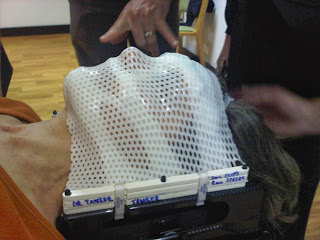This is the official creative task of week 3 of The Future of Storytelling MOOC, run by the University of Potsdam. You can find the course at https://iversity.org/courses/the-future-of-storytelling
I am to create an on-line presence for a fictional character of my own, with a connection to "Aunt Renie".
He is Pietie November - an amiable character for the most part - and you can visit him also on facebook:
www.facebook.com/PietieNovemberDetective
Pietie November is a character that I introduced into my
spoof Cape Town detective story that I wrote for last year's NaNoWriMo (National Novel Writing Month), held on-line in November each year: hence his surname “November”
– which is an actual surname in South Africa, dating from the days when slave
owners often gave their slaves as a surname, the month in which they were
purchased.
Pietie himself is a modern day vagrant – or as they would call him in
the Cape Coloured community – a “Stroller” or a “Bergie” (a name dating from the old days
when vagrants used to retire up the “berg” – the slopes of Table Mountain – to sleep).
Pietie is small in stature, his face is grizzled. For all we
know, Pietie may simply be prematurely aged by constant 24 hour exposure to Cape Town’s
capricious weather. He himself is unsure of his age. He speaks both Afrikaans
and English – often mixing the two.
Like most strollers, Pietie has a marked sense of humour and
is very talkative - and can tell a good story! He is mostly easy-going and is generous
with what he finds or is given as a hand-out. That said, he is not above a
fight with his fellow bergies when he considers it necessary! Not much damage
is done, as everyone mostly only fights if they get too drunk to do much more
than scream obscenities and land ineffectual swipes.
Pietie is usually employed these days in “working the
traffic” (begging at the traffic lights), a job which he takes quite seriously, though he preferred being a car guard, which he used to work at in town until
the “blerry foreigners” (usually refugees from further afield in Africa) took
over!
Pietie has been around - well, certainly around Cape Town at
least. He currently lives under an overpass near Oranjezicht, near the City centre. He has occasional
thoughts of strolling off and visiting the fabled Stellenbosch wine lands – perhaps there he might also find again
his “no good blixem” of a girlfriend, Teena, who was last seen walking off in that
direction (“going home” to the farm she had run away from) after the Varkies
dropped off on the side of the road well out of town an entire group of vagrants
(including Pietie and Teena) who had been disturbing the peace in a drunken
fight (started, it must be added, by Teena).
Apart from mourning the loss of Teena, Pietie finds Cape
Town highly entertaining – and it is his keen observation that has led him to
become the first ever Bergie Detective (in Cape Town at any rate). He can come
up with clues that others have thoughtlessly discarded and is expert in listening in unobtrusively to
other people’s conversations as they walk along the streets. In Cape Town, we
call this “picking up stompies” – as in picking up discarded cigarette ends –
which Pietie also likes doing so that he can roll his own “smokes” (another use
for newspaper). However, a number of forces act against Pietie actually solving
his cases – not enough stompies, falling asleep, arguing the case with fellow
bergies who confuse the issue for him (blerry rubbishes!), and entirely missing
the point – and most of the time, there was no case – but what can you expect? A
man is only human after all, and it helps to pass the time!
Until recently, Pietie November had no website at all, being
indigent. In fact, until a day or so ago, he had no access to any of the modern
media other than watching a bit of the TV in a shop window before the “Varkies”
(police) move him along. The nearest he gets to reading is in holding old
newspaper scraps that might have held some fish and chips - he calls them
"vis 'n skyfies" in Afrikaans - or a “Gatsby”, which is a french
style loaf with fillings. Yirra! The smells on those bits of papers tell him a
blerry good story of their own!
Anyway – there’s this ou vrou (old lady) who was a tourist.
At first Pietie thought that she said she was from Postberg up the West Coast,
but it turns out she is from a plek called “Potsdam” in Germany – which is
somewhere else. She is a nice ou tannie (old auntie) and she got talking to Pietie
after he managed to guard her car by the shops (tourists is mostly always nice,
hey!) and it turns out she is looking for all the ouens called November because some
of her old folks from way back lived in die Kaap (the Cape) and was owning a
farm and all they workers was called November. Now she is looking for them all
though they don’t even have the farm any more, and she is putting up something
on the computers called Facebook and all of the Novembers will be there – even Pietie!
She even said he can call her Aunt Renie because it seems that the old farmer
got up to some nonsense back in the day and they might even be family and all!
So now she is putting up a page for Pietie November even
though he doesn’t read and hasn’t got any computer to look at it – but it’s
nice to think about. Not every stroller has his own page on a computer!



